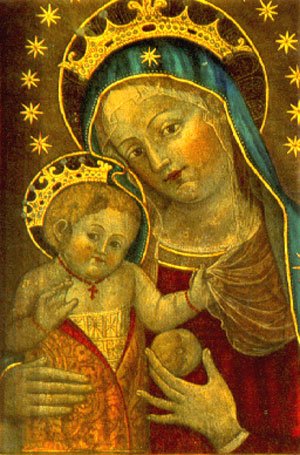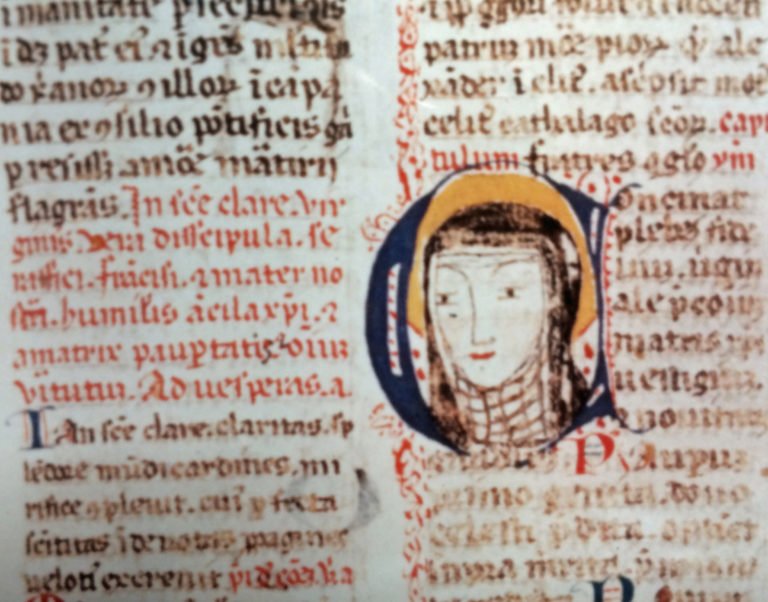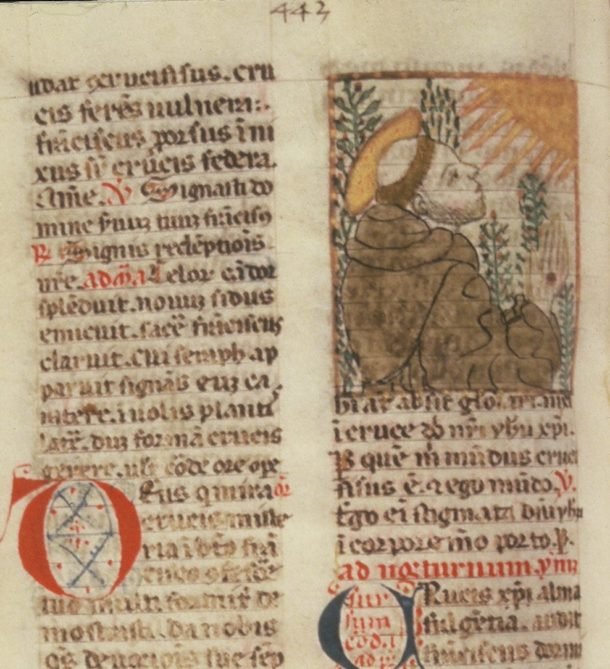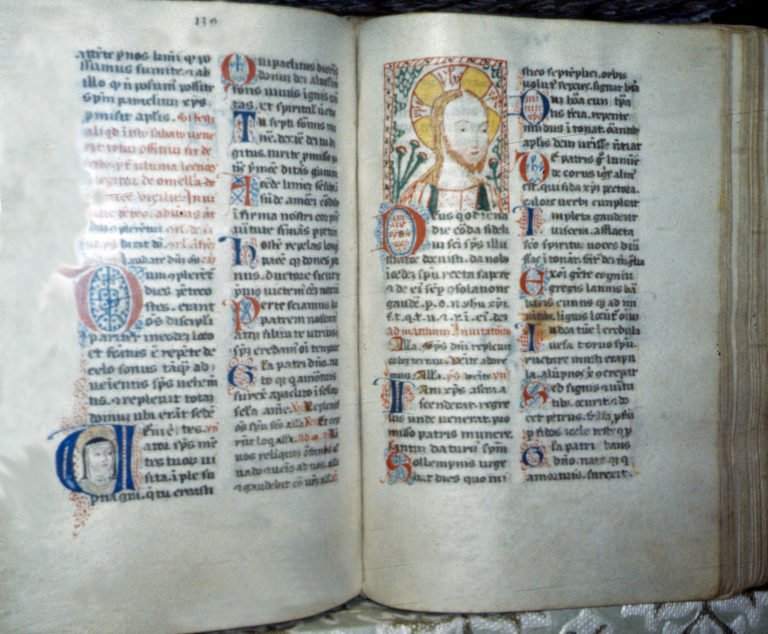Episode #104: Bits of "Breaking Barriers": St. Catherine of Bologna (Season 12, Episode 5)
For this season of ArtCurious, I’m doing something a little bit different. I’m treating you to renditions of eight of my favorite segments from Breaking Barriers: Women Artists of Renaissance Europe, my online course found exclusively at avid.fm. Every other week through January, I’ll share selections from Breaking Barriers, and encourage you that if you like it, you can purchase the whole course. Today: Artist-nuns are not rare: just look at the example of the famed Hildegard von Bingen, long praised as one of the first-known female artists. Today, we’re uncovering the story--and the myth--behind St. Catherine of Bologna, a mystical member of the Poor Clares whose artistic talents may (or not!) have been exaggerated. From Breaking Barriers: Women of Renaissance Europe, please enjoy “St. Catherine of Bologna: The Patron Saint of Artists.”
Please SUBSCRIBE and REVIEW our show on Apple Podcasts and FOLLOW on Spotify
SPONSORS:
Storyworth: Save $10 off your first purchase
Masterclass: Get unlimited access to EVERY class, and as an ArtCurious listener, you get 15% off an annual membership
Canvasprints.com: Get 25% off of your entire order of canvas prints, canvas wall displays, metal prints, photo tiles, photo blankets and pillows, and much more when you use code ARTCURIOUS25
Honeylove: Get 20% OFF @honeylove + Free Shipping with promo code ARTCURIOUS20 at https://www.honeylove.com! #honeylovepod
Paired: Connect with your partner every day using Paired. Download the app at https://www.paired.com/ARTCURIOUS
Want to advertise/sponsor our show?
We have partnered with AdvertiseCast to handle our advertising/sponsorship requests. They’re great to work with and will help you advertise on our show. Please email sales@advertisecast.com or click the link below to get started.
https://www.advertisecast.com/ArtCuriousPodcast
Episode Credits:
Production and Editing by Kaboonki. Theme music by Alex Davis. Logo by Dave Rainey. Additional music by Storyblocks.
ArtCurious is sponsored by Anchorlight, an interdisciplinary creative space, founded with the intent of fostering artists, designers, and craftspeople at varying stages of their development. Home to artist studios, residency opportunities, and exhibition space Anchorlight encourages mentorship and the cross-pollination of skills among creatives in the Triangle.
Recommended Reading
Please note that ArtCurious is a participant in the Bookshop.org Affiliate Program, an affiliate advertising program designed to provide a means for sites to earn advertising fees by advertising and linking to bookshop.org. This is all done at no cost to you, and serves as a means to help our show and independent bookstores. Click on the list below and thank you for your purchases!




Episode Transcript
Hi there, fellow Curious folks! Welcome back to the ArtCurious podcast, where we explore the unexpected, slightly odd, and strangely wonderful in art history. If you’ve listened to our last episode, you’ll know that this season of the podcast is different. Instead of our usual spate of new episodes, I’m taking a little time off to research a new book--yay!-- so I’m sharing some slightly zhug-ed renditions of eight of my favorite segments from my audio course, Breaking Barriers: Women Artists of Renaissance Europe. Breaking Barriers is a 21-day course, meaning that you get essentially a mini-episode of ArtCurious every day for three weeks straight, and the unique opportunity to learn about some artists that you may have never heard of before--and they are likely to blow your mind, or become your next favorite artist. That’s three weeks, with every day featuring the story of a new Renaissance painter, sculptor, miniature maker-- from Sofonisba Anguissola and Marietta Robusti to lesser-known artists like Plautilla Nelli and Levina Teerlinc, this course will lead you through the lives and careers of groundbreaking women who’ve made their marks on art history. This evergreen course is all about learning for fun, no tests, no papers, no quizzes, just cool content that you can access on your own time so you can learn at your own pace. Register for the course and start learning today at Avid.fm/jennifer. In the meantime, here’s one of my favorite snippets from Breaking Barriers, about the artist turned saint, the nun-scribe, St. Catherine of Bologna.
The story of the life of St. Catherine allows us to talk about some of the earliest women artists documented in Europe, though they remain mostly anonymous to us today. Many of these women were nuns, religious women, typically in Catholic convents who mostly segmented themselves off from Italian society. Some women who would go on to choose holy orders instead of the more quote-unquote traditional paths of marriage and motherhood really flourished in the freedoms gained within their cloistered halls. With no time spent on child-rearing or assisting a husband, nuns often had more opportunities for praying and doing good works, of course, but they also enjoyed the opportunity to study and explore creative pursuits. And even before the Renaissance, there was serious precedent for this, with medieval nuns like the German abbess Hildegard of Bingen, and Herrad of Landsberg, a French Abbess, as some of the strongest examples of women who dedicated their lives to manuscript illumination and even writing-- both Hildegard and Herrad not only illustrated the texts of others, but they also wrote their own works, too. Catherine of Bologna, then, fit right in line with centuries of women practicing their art while pursuing the glory of god.
Catherine, who, prior to her initiation into holy orders, was known by the name of Catherine Vigri, was born in September 1413, making her one of the earliest women-- but not the earliest, hint hint--that we are studying in Breaking Barriers, but she functions more in line with the earlier days of the Renaissance than most of the women we’ve discussed thus far in our course. Like many ladies who entered religious orders in those days, Catherine came from an upper-class Bolognese family, with close ties to the ruling family of Ferrara, which is located about thirty miles northeast of Bologna. Such geographical and personal connections meant that Catherine became embedded with the Ferrara rulers, functioning first as a petite lady-in-waiting to the Marquis of Ferrara’s wife, the ill-fated Parisina Malatesta, whose story we’ll uncover more fully in a moment. Catherine also became close friends with the Marquis’s daughter. As an upper-class girl, Catherine--only a child at this point-- was educated in the ways that would best prepare her for life as a noble wife: writing, music, poetry, and the like--all which would signal her as a serious catch to potential suitors. She’s similar, in this way, to many of the women we’ve previously highlighted this season, like the Anguissola sisters, for example.. Equally important for Catherine was the further exposure to cultural treasures that she received while at the court of Ferrara. In the Marquis’s library, she had access to a number of high-quality illuminated manuscripts, which she would enjoy poring over when she had some leisure time. This exposure would eventually serve her rather well in her future side-career as a visual artist.
In 1426, when Catherine Vigri was 13 years old, her life changed drastically. Her mistress, Parisina Malatesta, had been discovered having an illicit affair with her stepson, and both Parisina and her lover were executed by beheading. As a lady-in-waiting, Catherine Vigri was thus out of a job, to say the least. She needed to determine the next direction in her life, and opted to join a community of women identified as beguines, which are kind of like the layperson’s equivalency to becoming nuns, except they don’t take holy orders and could leave their semi-secluded community at any time. It’s a bit confusing to define, I think, but I see it as a baby step towards taking holy orders completely. And this seems to be what happened with Catherine and her cohort, who eventually did take their vows as part of the order of the Poor Clares, an order who roughly followed in the footsteps of St. Francis of Assisi and one of his earliest followers, St. Clare of Assisi-- hence the name.
What’s funny is that though we call her St. Catherine of Bologna, and even though she was, indeed, born in Bologna and she would die in Bologna, Catherine actually spent most of her life in Ferrara as part of the Poor Clares, and that’s where she not only did most of her works--including writing religious sermons, treatises, and illustrating her own breviary--more on that in a moment-- but she also began having mystical visions and both performing and experiencing miraculous occurrences. And it’s this combination of things: her dedication to god, her religious devotion, her visions and her miracles, that would eventually make her a Roman Catholic saint. That, and when she did die in 1463, she was buried but her body supposedly didn’t decay, and instead emanated a delightful floral smell-- a telltale sign that she was a miraculous, incorruptible holy woman. She was thus beatified by the church about 50 years after her death--which is like the way station to sainthood--and was officially canonized, or declared a saint, in the early 18th century. (You can go see her today in Bologna, by the way, where her body is on display in a little chapel in the church of Chiesa della Santa-- it’s kind of mummified and a bit creepy, but in my mind, that alone also means its totally worth a stopover. You know I love the creepy stuff.)
While Catherine’s religious background is the most important and most celebrated part of her biography, we are actually here today to talk about her work as an artist. Within her breviary-- which was her personal daily prayer book that dictated the order of the daily Catholic mass-- Catherine not only beautifully copied in her own prayers and scripture passages, but she opted to illustrate them, too, with particular interest in drawing images of Christ. She was especially devoted to the Christ child, with whom she felt an emotional connection, so there are lots of sweet, tiny images of a swaddled baby Jesus in her breviary. And legend has it that she also painted a devotional icon of the Madonna and Child, the so-called Madonna of the Peach, now located in the same chapel-- the Cappella Della Santa, in Bologna, which houses the remains of Catherine herself. The Madonna of the Peach, named for the fruit that the Virgin Mary holds in her left hand, is a beautiful work, all gilded in that late Medieval style of icon paintings, framed a bit morbidly by bone fragments, relics of other holy figures. The only thing that gives me pause is that it looks pretty different from a stylistic standpoint---more refined even--than the drawings in her breviary. So as much as I hate to admit it, I’m pretty skeptical of this specific attribution as a work by Catherine. As always, though, I am happy to be wrong, and I hope I am.
But the breviary-- a work that we know was created by Catherine herself--is pretty neat to look at. Not only has she lovingly illustrated Jesus as both infant and adult, but she also showcases her own drawings of both St. Francis and St. Clare, with whom her order was so closely linked. I especially love her image of Francis, shown in profile and berobed in his typical brown habit, his stigmata-ed hands in prayer as he basks in the light of the sun. She’s created this little garden, almost a tiny little vignette of a landscape-- which makes it so unique among her other illustrations.
From what little we know about Catherine’s upbringing, she seems to have been self-taught as an artist, so it’s likely that she learned on the job by watching, copying, and just trying her hand at this kind of work. Her illustrations, in particular, are directly in the tradition of Northern gothic manuscript illumination, so they are connected less to actual Renaissance art styles than some of the other artists we’ve discussed thus far, even though she herself was most definitely a “Renaissance” woman--in multiple senses of the phrase. But what’s neat is that even though she is clearly playing in that traditional wheelhouse--probably remembering much of what she saw while in the Ferrara court growing up, examining those illustrated manuscripts in the court library-- she also comes up with her own iconography, the symbols within her works of art. She was inventive in her own little ways, even while ultimately using her art for the greater good, once writing that the reason she produced her artworks was, quote, “to increase devotion for herself and others.” And it’s for this reason, too, that she’s often called the Patron Saint of Artists-- though she shares this title, too, with St. Luke the Evangelist, but that’s another tale for another day.
But there’s a curious coda to this story. In the last few decades, some scholars have been questioning the idea of St. Catherine as an artist at all, saying that many of the works outside of her breviaries that have been attributed to her--like that Madonna of the Peach that I mentioned previously, and like other panels now found outside of Bologna--may not actually have been painted by her. And this might very well be true-- the extent of her creative powers may have been mythologized. But then again, does that make her less of an artist? Based on her breviary alone, now in the collection of the Corpus Domini convent in Bologna, I’d refute this claim. She was most definitely an artist, creating a magnum opus in book form, filled with images that show a fascinating link between her personal interpretation of religious texts and her unique visual language. In the half-millennium since Catherine of Bologna lived, much more emphasis has been placed on her holy mysticism, her visions, and her miracles, because--well, they’re just showier, and make for really good stories. I mean, if the Virgin Mary came to you in a vision, that’s certainly something I’d like to hear about, truly. But it also means that, for better or for worse, that examinations of her contributions to the arts have fallen a bit by the wayside. So what better time to rediscover St. Catherine of Bologna and to celebrate her--not just as a holy woman, but as a creator in her own right.
I so appreciate you taking the time to listen to ArtCurious today-- thank you so much, and I hope you found a new inspiration in St. Catherine of Bologna. As I mentioned at the top of the show, it would sure mean a lot to me as an independent creator if you would register for my course, Breaking Barriers: Women Artists of Renaissance Europe. It’s on sale right now, 21 days, learn on your own time and at your own pace, and it’s fun--I promise. No quizzes or grades, either, just learning for the sake of good old fashioned learning! Please register now at avid.fm/jennifer, and not only will you get the entire 21 day course, but you’ll also receive a PDF with every episode featuring the images discussed and a recommended reading list. So again, that’s Breaking Barriers: Women Artists of Renaissance Europe, available now at avid.fm/jennifer.
I’ll be back with you again in two weeks to share another story from Breaking Barriers. Thank you, again, for supporting me while I research my next project--you are awesome. Remember that we’ve got exclusive video content coming at you over on YouTube. So check us out there-the link is in the show notes on your handy-dandy podcast app right now. Stick with me, and stay curious!






